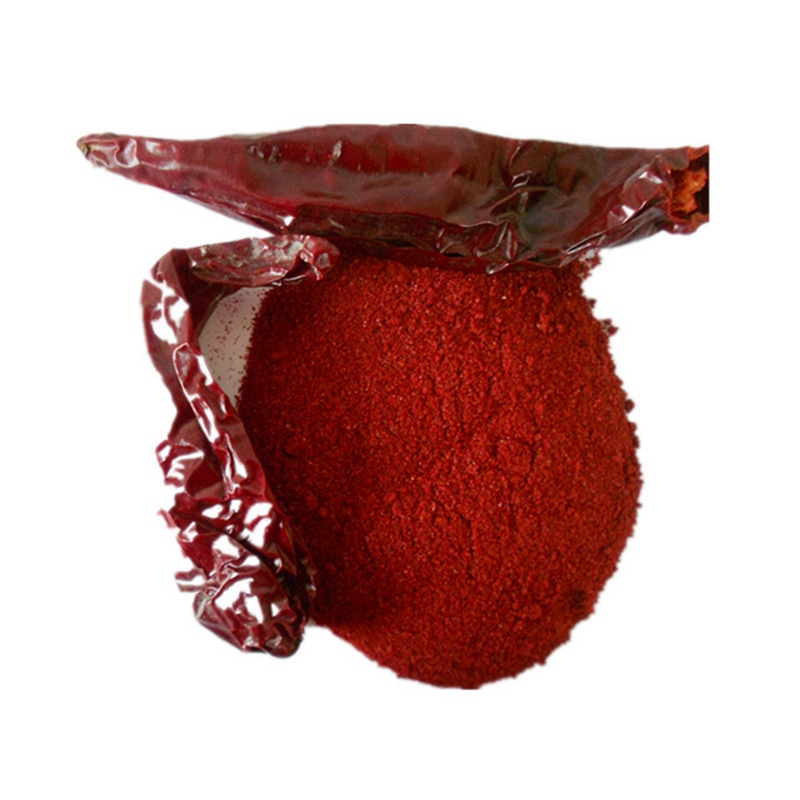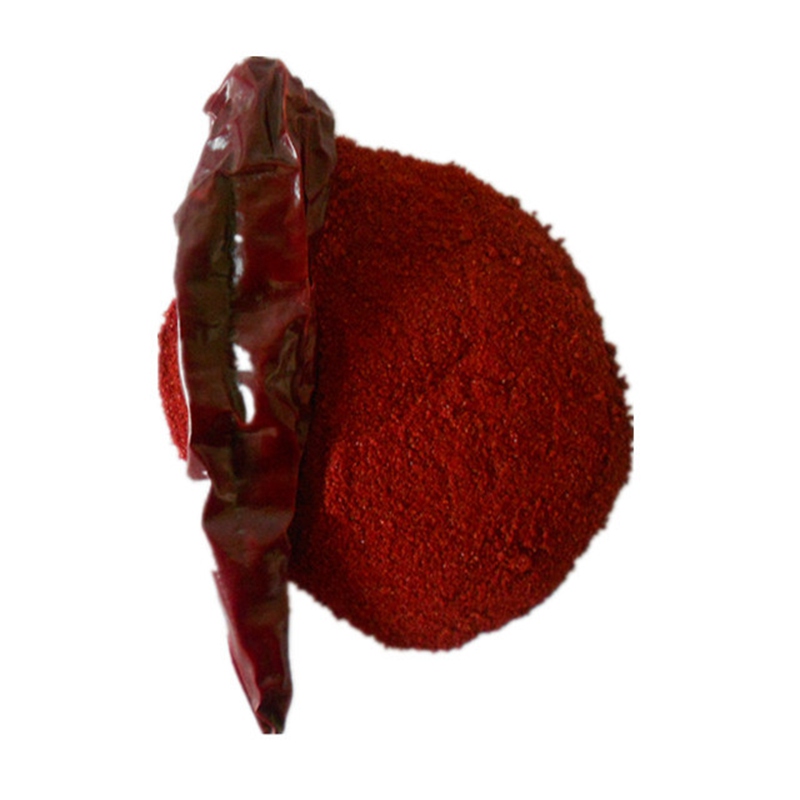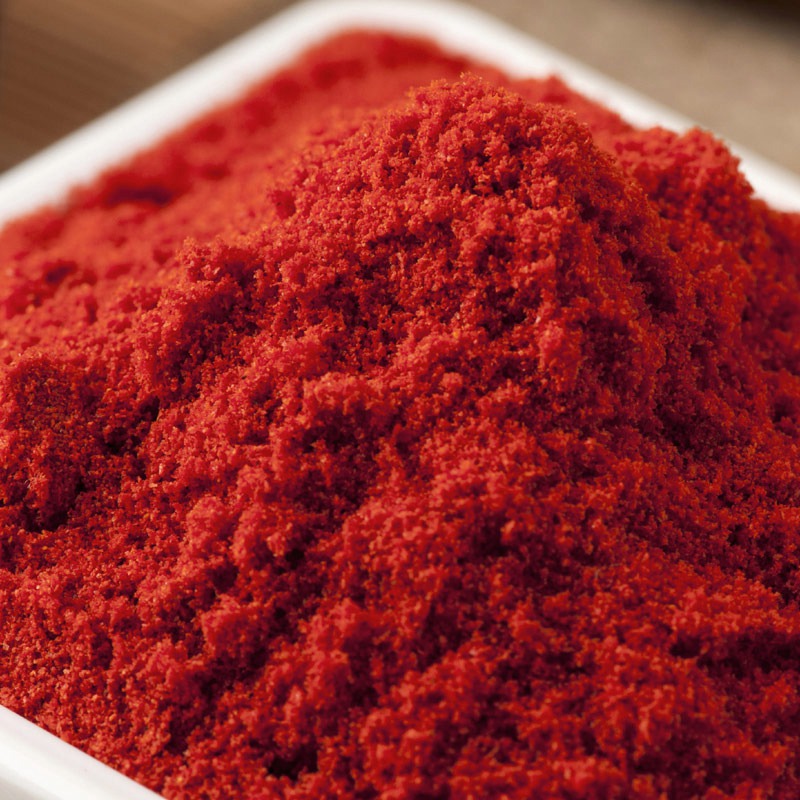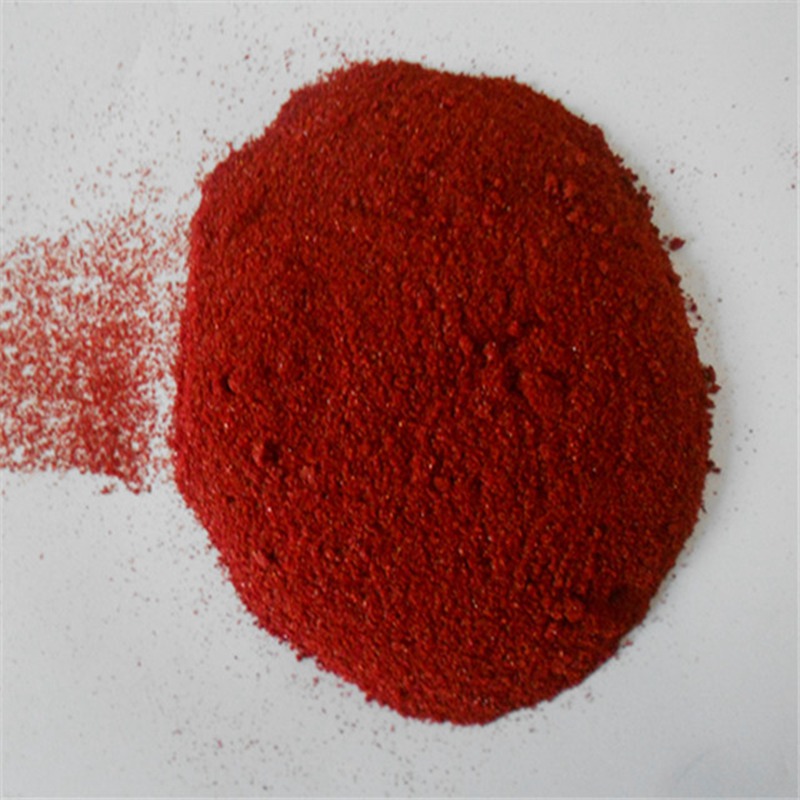Aug . 19, 2025 01:20 Back to list
Sweet Paprika Pimenton: Authentic Flavor & Vibrant Color
Navigating the Global Market of Sweet Paprika Pimenton and Sweet Chili Paprika
The global market for natural food colorants and flavor enhancers is experiencing robust growth, driven by consumer demand for clean-label products and the increasing adoption of natural ingredients by the food industry. Among these, sweet paprika pimenton stands out as a versatile and highly sought-after commodity, derived from the dried, ground fruits of the Capsicum annuum L. plant. This esteemed ingredient is prized for its vibrant red color, mild flavor, and distinct aromatic profile, making it indispensable across a myriad of culinary and industrial applications. Beyond its aesthetic appeal, sweet paprika offers natural antioxidant properties, contributing to both product quality and consumer health perception. The industry currently sees significant trends towards sustainable sourcing, enhanced traceability, and the development of specialized grades to meet diverse client specifications, including specific ASTA color values and particle sizes. Furthermore, the market is expanding its focus on related products like sweet chili paprika, which bridges the gap between purely sweet and moderately spicy profiles, catering to a broader spectrum of taste preferences while maintaining similar quality and application versatility. This evolution underscores the continuous innovation within the spice sector to deliver high-performance ingredients that align with evolving food manufacturing standards and consumer expectations for authenticity and functionality. Manufacturers are continuously investing in advanced processing technologies to ensure purity, safety, and consistent quality, crucial factors for maintaining competitive edge in a globalized supply chain environment where reliability and compliance with international food safety standards (such as ISO 22000, HACCP, and FDA regulations) are paramount. The meticulous control over growing conditions, harvesting techniques, and post-harvest processing directly impacts the final product's sensory attributes and functional performance in end-user applications, solidifying the ingredient's value proposition in various industries from food and beverage to nutraceuticals.
The Meticulous Manufacturing Process of Sweet Paprika Powder
The production of high-quality sweet paprika pimenton is a sophisticated multi-stage process, beginning with the careful selection of premium Capsicum annuum L. pods and extending to final packaging, adhering to stringent quality control protocols at every step. Initially, ripe paprika pods are hand-picked or mechanically harvested to ensure optimal maturity and color intensity. Post-harvest, the pods undergo a crucial drying phase, traditionally sun-dried or machine-dried in controlled environments to reduce moisture content to acceptable levels (typically below 10-12%), which is vital for preventing microbial growth and preserving color and flavor. This drying process must be meticulously controlled to avoid over-drying, which can lead to brittle pods and loss of volatile compounds, or under-drying, which risks mold development. Once dried, the pods are cleaned to remove stems, seeds, and any foreign matter, a critical step for purity. Subsequently, the cleaned pods are subjected to a precision grinding process using advanced industrial mills. This mechanical processing transforms the dried pods into fine powder, with particle size being a key technical parameter often specified in mesh sizes (e.g., 60-80 mesh) to suit different application requirements. Following grinding, the powder is typically sieved to achieve uniform particle distribution and consistency. Sterilization is the penultimate step, employing methods such as steam sterilization or irradiation to reduce microbial load to safe levels, meeting international food safety standards like FDA guidelines and EU regulations, without compromising the inherent color or flavor profile of the sweet paprika pimenton. Throughout this entire manufacturing chain, from raw material inspection to finished product testing, rigorous quality assurance measures, including photometric analysis for ASTA color value, moisture content analysis, and comprehensive microbiological testing (e.g., Total Plate Count, Yeast & Mold, E.coli, Salmonella), are implemented. These protocols ensure that the final sweet paprika powder consistently meets the highest industry benchmarks for purity, safety, and performance, delivering reliable color and flavor enhancement for industrial applications.

The careful management of these process parameters directly impacts the functional properties of the sweet paprika pimenton in various industrial settings. For instance, achieving a consistent particle size is crucial for even dispersion in spice blends, sauces, and dry rubs, preventing clumping and ensuring uniform color distribution. The specific drying and grinding methods chosen by manufacturers also play a significant role in preserving the carotenoid pigments responsible for the vibrant red color, as well as the volatile oils that contribute to its characteristic aroma. Advanced techniques, such as cryogenic grinding, can be employed for heat-sensitive varieties to further preserve flavor and color integrity, though this is less common for standard sweet paprika. Adherence to standards like ISO 9001 for quality management and ISO 22000 for food safety management systems ensures that every batch of sweet paprika powder produced is traceable and compliant with global regulatory requirements, offering unparalleled reliability to B2B clients. Furthermore, the selection of raw materials is paramount; reputable manufacturers source their paprika pods from regions known for optimal growing conditions, which naturally yields higher quality pigments and richer flavor profiles. This integrated approach, encompassing stringent raw material sourcing, state-of-the-art processing technology, and comprehensive quality control, is what elevates a premium sweet paprika pimenton product, ensuring its superior performance in diverse applications ranging from processed meats and snack foods to pharmaceutical colorants and cosmetic additives. The precise control over moisture content also extends the shelf life, typically providing a stable product for 18-24 months when stored under optimal conditions, underscoring its long-term reliability for industrial inventory management.
Technical Specifications and Quality Assurance for Sweet Paprika Powder
For B2B stakeholders, understanding the precise technical specifications and robust quality assurance protocols is critical when sourcing sweet paprika pimenton. Key parameters include the ASTA (American Spice Trade Association) color value, which quantifies the pigment content and color intensity of the paprika. Higher ASTA values, typically ranging from 80 ASTA to over 160 ASTA for premium grades, indicate a more vibrant and potent coloring capability, which is essential for applications requiring consistent visual appeal, such as in processed meats, sauces, and seasoning blends. Particle size, measured in mesh (e.g., 60-80 mesh, 100 mesh, or ultra-fine), significantly influences solubility, dispersion, and textural contribution in the final product. Moisture content, typically maintained below 10-12%, is crucial for preventing caking and inhibiting microbial growth, thereby extending shelf life and ensuring product stability. Volatile oil content, while less prominent than in other spices, contributes subtly to the aromatic profile. Furthermore, microbiological specifications are paramount, with rigorous testing for Total Plate Count (TPC), Yeast and Mold, E. coli, and Salmonella being standard to ensure compliance with global food safety regulations (e.g., FDA BAM, ISO 6579 for Salmonella). Absence of allergens, heavy metals, and pesticide residues (tested via GC-MS/LC-MS) are also critical considerations for compliance and consumer safety, especially in the context of global trade. Reputable manufacturers provide comprehensive Certificates of Analysis (CoA) for each batch, detailing these parameters and confirming adherence to specified standards, including adherence to ISO, HACCP, and GMP guidelines. This level of transparency and commitment to documented quality helps establish trust and reliability in the supply chain. For example, a sweet chili paprika variant would also adhere to these standards, with an additional focus on a controlled, low Scoville Heat Unit (SHU) range, ensuring a mild warmth without overwhelming the primary sweet notes, providing an ideal balance for specific culinary creations.

Beyond these intrinsic product parameters, the operational quality assurance extends to packaging and storage. Premium sweet paprika pimenton is typically packed in multi-layered, food-grade bags or drums, often with inner liners to protect against moisture, light, and oxygen, which can degrade color and flavor over time. Storage in cool, dry, and dark conditions, away from direct sunlight and strong odors, is recommended to maximize shelf life, which typically ranges from 18 to 24 months from the production date. Compliance with international certifications such as Kosher, Halal, and non-GMO is increasingly requested by global clients, reflecting diverse dietary and ethical considerations. Manufacturers who invest in third-party audits and certifications demonstrate a commitment to these broader quality parameters, further reassuring their B2B partners. This holistic approach to quality, from raw material selection and processing to packaging and certification, is what differentiates a reliable supplier in the competitive spice market. It ensures that the sweet paprika pimenton delivered not only meets but often exceeds the demanding requirements of industrial food production, enabling seamless integration into complex formulations and maintaining product integrity throughout its lifecycle. Regular calibration of testing equipment and participation in inter-laboratory comparison programs also serve to validate the accuracy and consistency of internal quality control measures, reinforcing the supplier's technical expertise and commitment to delivering a consistently superior product.
Typical Sweet Paprika Powder Specifications
| Parameter | Typical Range for Premium Sweet Paprika Pimenton | Testing Method/Standard |
|---|---|---|
| ASTA Color Value | 100 - 160+ ASTA | ASTA Method 20.1 |
| Moisture Content | < 10.0% | AOAC 925.09 |
| Particle Size (Mesh) | 60-80 Mesh (Customizable) | Sieve Analysis (e.g., ASTM E11) |
| Total Plate Count (TPC) | < 10^5 CFU/g | ISO 4833-1 |
| Yeast & Mold | < 10^3 CFU/g | ISO 21527-2 |
| E. coli | Absent/g | ISO 16649-1 |
| Salmonella | Absent/25g | ISO 6579-1 |
| Aflatoxins (B1, B2, G1, G2) | < 5 ppb Total | HPLC/ELISA |
Diverse Applications Across Industries and Technological Advantages
The versatility of sweet paprika pimenton powder makes it an invaluable ingredient across a broad spectrum of industries, primarily contributing to visual appeal, flavor enhancement, and natural branding. In the food processing sector, it is extensively used in processed meats, such as sausages, cured hams, and poultry products, where its rich red hue signifies quality and freshness, alongside providing a mild, pleasant flavor that complements savory profiles. It is a fundamental component in spice blends for snacks, chips, and ready-to-eat meals, delivering consistent color and a base flavor. Sauces, dressings, soups, and marinades also benefit significantly from the addition of sweet paprika pimenton, offering natural color stability even under varying processing conditions. Beyond its culinary uses, the cosmetic industry utilizes it as a natural dye for lipsticks and blushes, leveraging its inherent pigments. The nutraceutical and pharmaceutical sectors may incorporate it for its natural antioxidant properties derived from carotenoids, contributing to health supplements and natural food colorants. The primary advantage of using premium sweet paprika powder lies in its natural origin, aligning with the clean label movement preferred by consumers globally. Unlike synthetic colorants, it provides a natural and authentic coloring solution without concerns over artificial additives. Its consistent ASTA color value ensures batch-to-batch uniformity, critical for industrial production where product appearance directly impacts brand perception. The stability of its color, even when subjected to heat or light during processing and storage, is a significant technological advantage over less stable natural color alternatives, reducing product degradation and waste. Furthermore, its mild, characteristic flavor enhances products without overpowering other ingredients, making it a highly adaptable ingredient for diverse formulations. The low microbial count achieved through advanced sterilization methods guarantees safety and extended shelf life, reducing risks for manufacturers and consumers alike.

Another compelling advantage is its role in providing functional benefits, albeit subtle, such as its natural antioxidant capacity which helps in preserving the freshness and extending the shelf life of the final food products, particularly those susceptible to oxidative degradation. This makes sweet paprika pimenton a preferred choice for formulations where both color and mild preservative effects are desired. For industries looking for a hint of warmth without intense heat, sweet chili paprika offers a tailored solution, providing a nuanced flavor profile that expands application possibilities in ethnic cuisines, savory snacks, and specialized seasoning blends. This variant maintains the vibrant color of traditional sweet paprika while introducing a controlled level of pungency, typically within a very low Scoville Heat Unit (SHU) range. Suppliers often provide custom blends or specific particle sizes, which allows for precise integration into unique manufacturing processes, minimizing production complexities and optimizing yield. The ability to source non-GMO, organic, or ethically certified sweet paprika powder further enhances its appeal, aligning with contemporary consumer values and corporate sustainability goals. The robustness of its flavor and color under various pH levels and processing temperatures ensures consistent performance, a critical factor for large-scale food production. Its versatility not only streamlines ingredient sourcing for manufacturers but also supports the creation of innovative products that resonate with evolving consumer tastes and health-conscious choices, underscoring its pivotal role in the modern food ingredient landscape. The economic benefits include reduced need for artificial colors and the ability to command a premium for naturally colored and flavored products in the market.
Choosing the Right Supplier: Manufacturer Comparison and Customization Solutions
Selecting the ideal supplier for sweet paprika pimenton is a critical decision for B2B entities, requiring a comprehensive evaluation beyond just price per kilogram. A reputable manufacturer distinguishes itself through consistent product quality, robust supply chain management, and a deep understanding of customer needs. Key factors for comparison include certification standards (e.g., ISO 22000, HACCP, FSSC 22000, Kosher, Halal, Organic), which validate adherence to international food safety and quality management systems. Proven traceability from farm to finished product is paramount, ensuring transparency and accountability. Manufacturers with extensive experience, say over a decade in the spice industry, typically possess refined processing techniques, established global sourcing networks, and robust R&D capabilities to meet evolving market demands. Financial stability and a strong logistics infrastructure are also crucial for ensuring reliable and timely delivery, especially for bulk orders or just-in-time inventory systems. Companies should assess a supplier's responsiveness to inquiries, technical support, and willingness to collaborate on unique formulation challenges. For instance, a client requiring sweet paprika powder for a specific low-fat meat product might need a particular particle size or ASTA value that maintains color intensity without affecting texture. Leading suppliers excel in offering highly customized solutions, tailoring specifications such as ASTA color (e.g., 100 ASTA, 120 ASTA, 140 ASTA), particle size (from coarse to micronized powders), and packaging formats (e.g., 25kg bags, bulk totes, or specialized drums) to seamlessly integrate into specific industrial processes. This level of customization ensures optimal performance and efficiency, minimizing production downtime and enhancing end-product quality, which are significant value propositions in competitive markets.

Beyond standard product offerings, an exceptional supplier also provides value-added services such as technical consultation, assisting clients in optimizing their formulations or troubleshooting application issues. This includes advice on how sweet paprika pimenton interacts with other ingredients, its stability under different pH or thermal conditions, and best storage practices to maintain its integrity. Some manufacturers even offer co-development opportunities for novel products, leveraging their expertise in spice science and food technology. For specific applications requiring a nuanced flavor profile, such as those that might benefit from a gentle warmth, suppliers capable of providing a sweet chili paprika blend with a guaranteed low Scoville rating, alongside precise color specifications, are invaluable. This bespoke approach ensures that clients receive an ingredient that perfectly matches their sensory and functional requirements, avoiding the need for internal re-processing or blending. Manufacturers with a robust global presence and diversified sourcing capabilities are often more resilient to supply chain disruptions, offering greater security of supply. Regular quality audits by the client or third-party agencies are also a testament to a supplier's confidence in their quality systems. Ultimately, partnering with a supplier who prioritizes long-term relationships, consistent quality, and responsive technical support leads to greater efficiencies, innovation, and enhanced trust in the ingredient supply, which is critical for maintaining product consistency and brand reputation in the highly competitive food and beverage sector.
Real-World Application Case Studies and Client Successes
The practical application of high-quality sweet paprika pimenton in industrial settings showcases its transformative power for various product lines. Consider a leading European processed meat manufacturer facing challenges with inconsistent color in their salami and chorizo lines due to varying paprika quality. By switching to a supplier providing sweet paprika powder with a guaranteed 140 ASTA value and stringent particle size control (80 mesh), they achieved remarkable color uniformity across all batches, reducing product rework by 15% and significantly enhancing consumer appeal. This consistency not only streamlined their production but also reinforced their brand image for premium, reliable products. Another compelling example comes from a prominent snack food company in North America that sought to replace artificial colorants in their flavored potato chips and corn snacks with natural alternatives. Their technical team, in collaboration with our experts, developed a bespoke blend incorporating sweet paprika pimenton with a specific ASTA range and a fine particle size to ensure even coating and vibrant, appealing color without any discernible texture. This strategic shift enabled them to market their snacks with a "clean label" claim, leading to a 20% increase in market share among health-conscious consumers within the first year of launch, demonstrating the direct correlation between ingredient quality and market performance. Furthermore, a global spice blend producer aiming to develop a new "mild chili" seasoning required a component that offered a subtle warmth balanced with rich color. Our tailored sweet chili paprika solution, developed with a precise SHU and ASTA specification, allowed them to create a unique flavor profile that resonated with a broad consumer base, leading to its rapid adoption in multiple international markets and cementing their position as an innovator in the seasoning sector.
These successful case studies underscore the critical importance of selecting a supplier who not only provides a premium sweet paprika powder but also offers the technical expertise and flexibility to develop customized solutions. In a situation where a beverage company was developing a new vegetable juice blend and needed a natural colorant that would remain stable in an acidic environment, traditional paprika extracts proved challenging. By employing a specialized form of sweet paprika pimenton that was micro-encapsulated for enhanced stability, we delivered a solution that maintained its vibrant red hue throughout the juice's shelf life, despite exposure to light and acidic conditions. This innovation allowed the client to successfully launch their product with a natural color claim, differentiating it in a crowded market. Similarly, a pet food manufacturer was seeking to improve the visual appeal of their dry kibble without resorting to synthetic dyes. Our technical team advised on incorporating a specific grade of sweet paprika pimenton that adhered well to the kibble surface during the coating process, providing a consistent, appealing color that signaled quality to pet owners. The seamless integration of our product into their existing manufacturing line, coupled with robust microbial controls, ensured both aesthetic improvement and food safety compliance. These diverse applications illustrate that while the core product is sweet paprika powder, its true value is unlocked through precise specification, advanced processing, and collaborative innovation, directly translating into tangible benefits for our B2B partners, from enhanced product appeal to improved process efficiency and increased market competitiveness.
Frequently Asked Questions (FAQ) about Sweet Paprika Pimenton
Q: What is the typical shelf life of your sweet paprika powder, and how should it be stored?
A: Our premium sweet paprika pimenton typically has a shelf life of 18 to 24 months from the date of manufacture, provided it is stored correctly. To maintain its optimal color, flavor, and microbial integrity, it should be kept in a cool, dry place, away from direct sunlight, heat, and strong odors. Ideally, storage temperatures should be below 20°C (68°F) and relative humidity below 60%. Our packaging, typically multi-layered, food-grade bags or drums, is designed to protect the product from environmental degradation, ensuring its quality until its best-before date. Adherence to these storage guidelines is crucial for preserving the ASTA color value and preventing any flavor degradation over time. Proper sealing after each use is also recommended to limit exposure to ambient moisture and oxygen, which can cause caking or color fading.
Q: Is your sweet paprika powder free from allergens and GMOs?
A: Yes, our sweet paprika powder is inherently free from the major common allergens, including gluten, dairy, soy, and nuts. It is processed in facilities designed to prevent cross-contamination, and allergen control programs are strictly enforced. We also offer certified non-GMO sweet paprika pimenton variants, aligning with growing consumer preferences for naturally sourced ingredients. Our comprehensive quality assurance protocols include rigorous testing and full traceability to ensure that our products meet these specific purity and labeling requirements. We can provide detailed allergen statements and non-GMO certificates upon request, demonstrating our commitment to transparency and compliance with international food safety standards. This commitment ensures that our sweet paprika pimenton can be safely incorporated into a wide range of sensitive food formulations.
Q: What is the typical delivery lead time for bulk orders, and what are your quality assurance guarantees?
A: Delivery lead times for bulk orders of sweet paprika pimenton can vary depending on quantity, destination, and current stock levels, but typically range from 2 to 4 weeks for international shipments after order confirmation. We work closely with our logistics partners to ensure efficient and timely delivery. For domestic orders, lead times are significantly shorter, usually within 3-7 business days. Our quality assurance guarantees are robust: every batch of sweet paprika powder undergoes extensive testing, as detailed in our technical specifications, including ASTA color, moisture, particle size, and comprehensive microbiological analysis. We provide a Certificate of Analysis (CoA) with each shipment, verifying that the product meets or exceeds agreed-upon specifications and international standards (e.g., ISO, HACCP, FDA). In the unlikely event of any quality discrepancy, we offer a comprehensive quality assurance commitment, including product replacement or credit, subject to our established terms and conditions. Our commitment is backed by decades of experience and a global reputation for reliability, ensuring peace of mind for our B2B partners when sourcing sweet paprika pimenton.
References
- American Spice Trade Association (ASTA). Official Analytical Methods of the American Spice Trade Association.
- ISO 22000:2018. Food safety management systems – Requirements for any organization in the food chain. International Organization for Standardization.
- United States Food and Drug Administration (FDA). Bacteriological Analytical Manual (BAM).
- Pérez-Gálvez, A., & Viera, I. (2012). Paprika Pigments. In: Handbook of Food Products Manufacturing. John Wiley & Sons, Inc.
- Capsicum. In: Minor Spices and Condiments: Processing, Technology, and Applications. CRC Press, 2012.
This is the last article
-
Sweet Paprika Pimenton: Authentic Flavor & Vibrant Color
NewsAug.19,2025
-
Spicy Red Pepper Flakes - Premium Chili Flakes
NewsAug.18,2025
-
Premium Dried Ghost Chili Pods | Extreme Heat & Flavor
NewsAug.17,2025
-
Premium Shishito Paprika Powder: Mild, Aromatic Spice
NewsAug.16,2025
-
Premium Chili Powder-70: 0-80,000 SHU Spice for Every Dish
NewsAug.15,2025
-
Premium Paprika Crushed Red Pepper | Intense Heat & Flavor
NewsAug.14,2025

